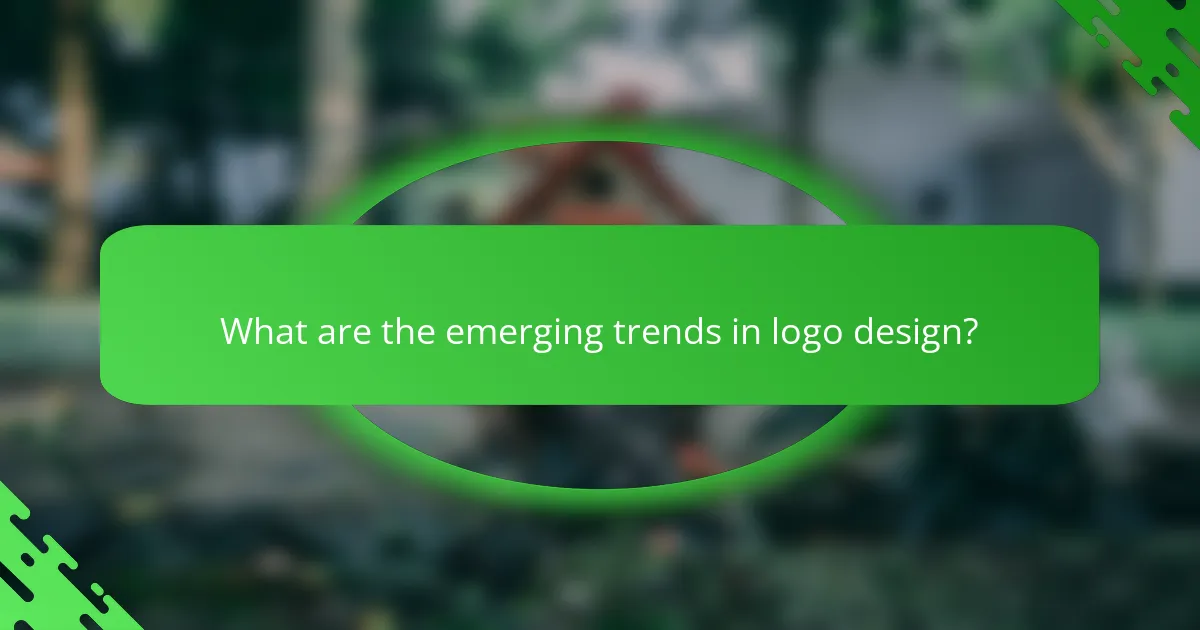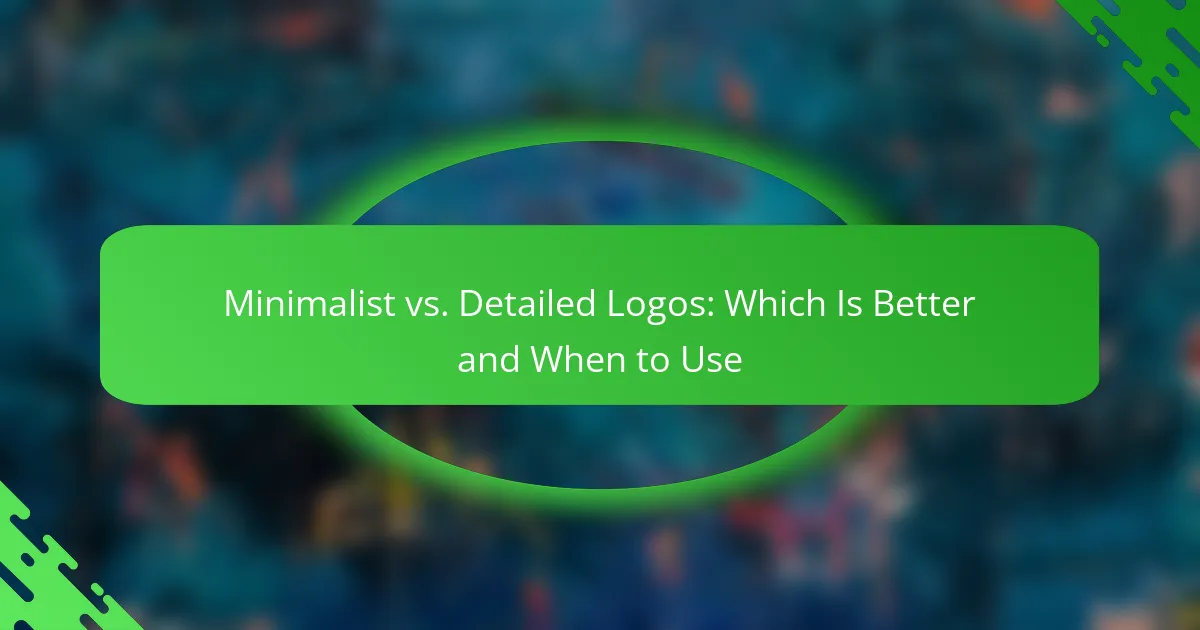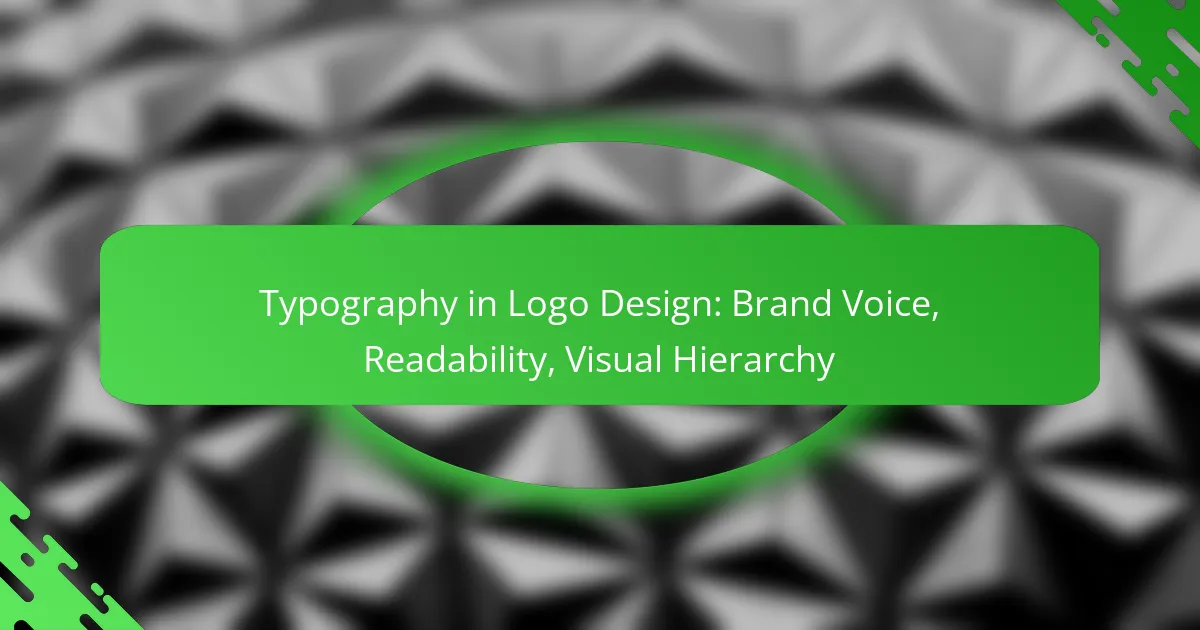Choosing between a minimalist and a detailed logo is crucial for effectively communicating your brand identity. Minimalist logos offer simplicity and versatility, making them ideal for modern aesthetics, while detailed logos can convey complex narratives and resonate with niche audiences. Understanding the strengths of each style will help you select the right approach based on your brand’s goals and target market.

When should you use a minimalist logo?
A minimalist logo is best used when you want to convey simplicity and clarity in your brand identity. This style enhances recognition and versatility, making it suitable for various applications and modern aesthetics.
Brand simplicity and recognition
Minimalist logos focus on essential elements, which helps in creating a straightforward and memorable brand image. This simplicity allows consumers to quickly identify and recall the brand, especially in crowded markets. For example, brands like Apple and Nike utilize minimalist designs that are instantly recognizable.
When designing a minimalist logo, prioritize core brand values and avoid unnecessary details. A clean design often leads to stronger brand recall, as it reduces cognitive load for the viewer.
Versatility across mediums
Minimalist logos are highly versatile and can be easily adapted across various platforms and mediums. Whether displayed on a website, business card, or billboard, a simple design maintains its integrity and impact. This adaptability is crucial in today’s multi-channel marketing environment.
Consider how your logo will appear in different sizes and formats. A minimalist logo typically scales well, ensuring clarity whether it’s on a small mobile screen or a large print advertisement.
Modern aesthetic appeal
Minimalist logos align well with contemporary design trends that favor clean lines and simplicity. This modern aesthetic resonates with audiences who appreciate elegance and sophistication in branding. Companies in tech, fashion, and lifestyle sectors often adopt minimalist logos to reflect innovation and forward-thinking.
To achieve a modern look, focus on a limited color palette and simple typography. Avoid overly complex graphics that may detract from the logo’s overall impact. A well-designed minimalist logo can enhance your brand’s perceived value and relevance in today’s market.

When is a detailed logo more effective?
A detailed logo is more effective when it conveys complex brand narratives, targets niche audiences, or enhances storytelling through design. These logos can communicate deeper meanings and resonate more with specific consumer groups, making them suitable for brands with rich histories or specialized markets.
Complex brand narratives
Detailed logos excel at representing complex brand narratives by incorporating various elements that tell a story. For instance, a logo for a heritage brand might include symbols that reflect its history, values, and mission. This complexity can create a stronger emotional connection with consumers who appreciate the depth behind the brand.
When designing a logo with a complex narrative, consider integrating multiple visual elements that represent different aspects of your brand. However, ensure that the overall design remains cohesive and not overly cluttered, as clarity is still essential.
Targeting niche audiences
For brands that cater to niche markets, detailed logos can effectively communicate specific attributes that resonate with those audiences. For example, a logo for an artisanal coffee shop might feature intricate designs that highlight its commitment to quality and craftsmanship. Such logos can attract customers who value authenticity and uniqueness.
When targeting niche audiences, research their preferences and values to guide the logo design. A detailed logo should reflect the interests and aesthetics of the target demographic, ensuring it stands out in a crowded marketplace.
Enhanced storytelling through design
Detailed logos can enhance storytelling by visually representing a brand’s journey, mission, or values. For example, a logo that incorporates elements of nature may convey a brand’s commitment to sustainability. This storytelling aspect can engage consumers on a deeper level, making the brand more memorable.
To effectively utilize storytelling in a detailed logo, focus on key themes that align with your brand’s identity. Use symbols, colors, and typography that reinforce the narrative you want to communicate, ensuring that each element contributes to the overall message.

How do minimalist and detailed logos compare?
Minimalist logos focus on simplicity and visual clarity, while detailed logos emphasize intricate design elements. The choice between them depends on brand identity, target audience, and practical considerations like cost and scalability.
Visual clarity vs. intricate design
Minimalist logos prioritize visual clarity, making them easily recognizable and memorable. They often use basic shapes and limited color palettes, which can enhance brand recall in crowded markets.
In contrast, detailed logos can convey complex ideas or narratives through intricate designs and richer color schemes. However, they may lose impact when scaled down or viewed from a distance, potentially confusing the audience.
Brand identity implications
Minimalist logos often project modernity and sophistication, appealing to audiences that value simplicity and efficiency. Brands like Apple and Nike exemplify this approach, using clean lines and straightforward designs to communicate their core values.
Detailed logos, on the other hand, can reflect tradition, craftsmanship, or luxury. Brands such as Rolls-Royce or luxury fashion houses often utilize detailed logos to evoke a sense of heritage and exclusivity, appealing to a different market segment.
Cost considerations for design
Creating a minimalist logo typically involves lower design costs due to its simplicity, requiring less time and fewer resources. This can be advantageous for startups or small businesses with limited budgets.
Detailed logos may incur higher costs due to the complexity of design work and the need for skilled designers. However, investing in a detailed logo can pay off by establishing a strong brand identity that resonates with a specific audience, potentially leading to higher customer loyalty.

What are the key factors in logo design selection?
Key factors in logo design selection include understanding the target audience, adhering to industry standards, and ensuring alignment with brand values. Each of these elements plays a crucial role in determining whether a minimalist or detailed logo is appropriate for a specific brand.
Target audience preferences
Understanding the preferences of your target audience is essential in logo design. Different demographics may respond better to either minimalist or detailed logos based on their tastes and expectations. For instance, younger audiences might favor modern, minimalist designs, while older consumers may appreciate more intricate, traditional logos.
Conducting surveys or focus groups can provide valuable insights into what resonates with your audience. Pay attention to color schemes, shapes, and overall aesthetics that appeal to them, as these factors can significantly influence brand perception.
Industry standards and trends
Each industry has its own standards and trends that can dictate logo design choices. For example, technology companies often opt for sleek, minimalist logos to convey innovation and efficiency, while luxury brands may lean towards detailed logos that evoke a sense of craftsmanship and exclusivity.
Staying updated on industry trends can help ensure your logo remains relevant. Regularly review competitors and market leaders to identify common design elements that resonate within your sector, and consider how your logo can stand out while still fitting within those norms.
Brand values and mission alignment
Your logo should reflect your brand’s core values and mission. A minimalist logo might suggest simplicity and efficiency, aligning well with brands that prioritize straightforwardness, while a detailed logo could convey richness and complexity, suitable for brands that emphasize heritage or craftsmanship.
Before finalizing your logo, evaluate how well it communicates your brand’s message. Consider creating a mood board that illustrates your brand’s values and how they can be visually represented. This exercise can guide your design choices and ensure consistency across all branding materials.

What are the emerging trends in logo design?
Emerging trends in logo design focus on adaptability, sustainability, and technological integration. Designers are increasingly creating logos that not only represent brands but also function effectively across various digital platforms and mediums.
Adaptive logos for digital platforms
Adaptive logos are designed to maintain brand identity across different digital environments, such as websites, social media, and mobile applications. These logos often feature variations in size, color, and complexity to suit specific contexts. For example, a detailed logo might be simplified for a mobile app icon while retaining its essence.
When creating adaptive logos, consider the primary use cases and ensure that the logo remains recognizable at various scales. Test the logo in different formats to ensure clarity and impact, particularly in low-resolution scenarios.
Sustainability in design choices
Sustainability in logo design involves using eco-friendly practices and materials, as well as creating designs that minimize waste. Designers are increasingly opting for color palettes that require fewer inks and choosing digital formats that reduce the need for physical materials. This approach not only appeals to environmentally conscious consumers but also aligns with global sustainability goals.
To implement sustainable practices, consider using vector graphics that can be resized without losing quality, and opt for digital over print whenever possible. Engaging in sustainable branding can enhance a company’s reputation and attract a growing segment of eco-aware customers.
Integration of augmented reality features
Augmented reality (AR) features in logo design allow brands to create interactive experiences that engage consumers in innovative ways. By incorporating AR elements, logos can come to life through mobile applications, offering users a unique way to connect with a brand. For instance, a logo might trigger an AR experience that showcases a product or tells a brand story when scanned with a smartphone.
When integrating AR, ensure that the experience is seamless and enhances the brand message. Focus on user experience and consider how the AR feature can provide value to the consumer, making the interaction memorable and meaningful.



